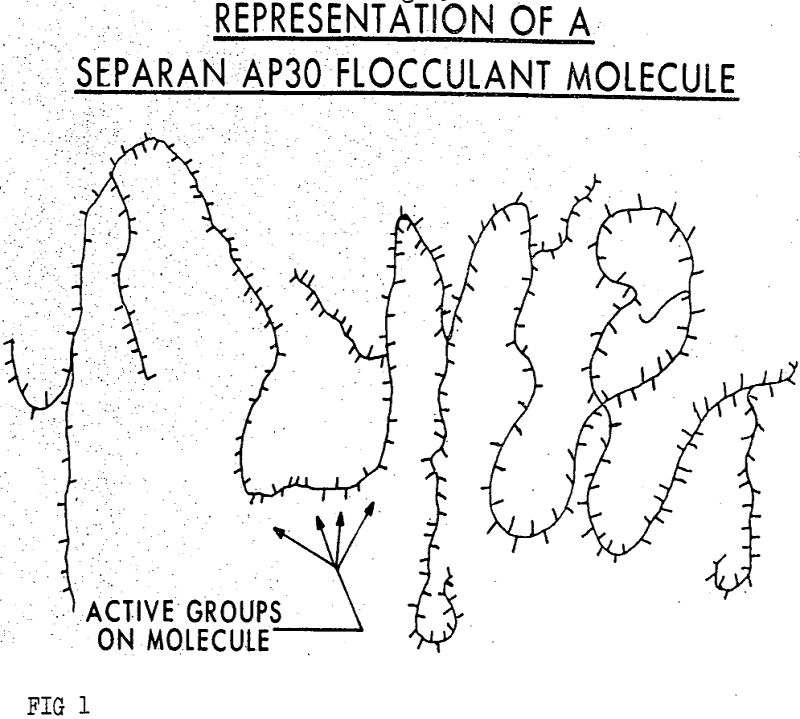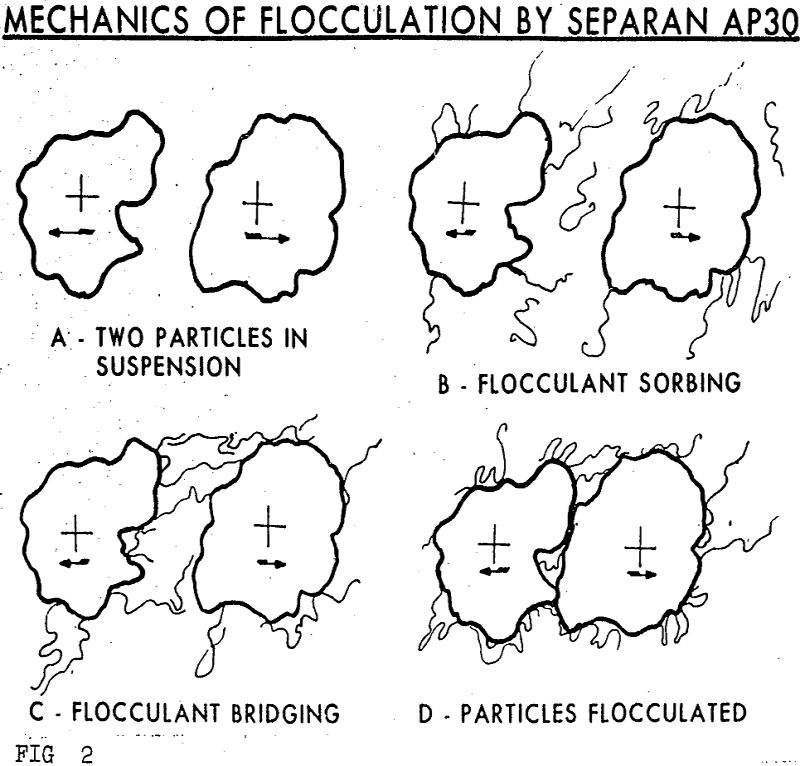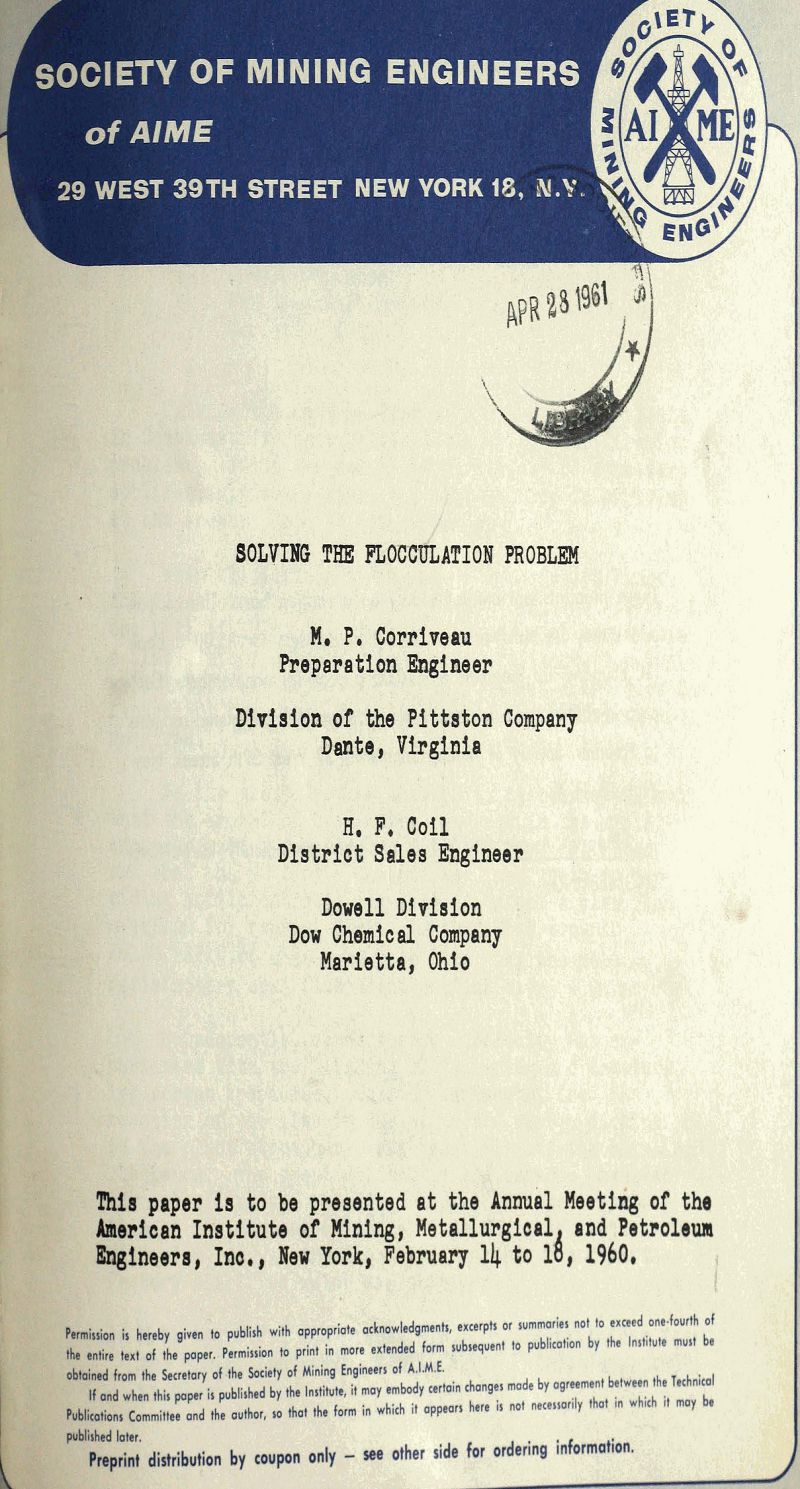This is the case history of how two nearby plants in Southwest Virginia solved their water clarification problems. While the solutions should not be considered applicable industry-wide, the methods used in arriving at the answers deserve, consideration.
As the plant tonnage increased, it became evident that the amount of coal fines produced in the mining and preparation was greater than had been estimated and that the 90-foot thickener was inadequate in providing sufficient settling time to effect a clarified overflow for reuse. Testing showed that Separan 2610S (NP10) when used with lime, was the most satisfactory coal flocculant available.
Late in 1958, Dow Chemical Company introduced Separan AP30 to the coal industry, and Clinchfield was asked to field test the hew product,, The field test was carried out at the Moss No. 3 Plant, substituting AP30 for the NP10. Immediately, it was found that alum was not compatible with the new Separan AP30 and the use of alum had to be discontinued before the AP30 could fulfill its expectations.
Since AP30 has been shown to have a high affinity for solid surfaces, analyses were made on similar samples of clays from the two mines to determine the nature of the solids.
It would appear from the data that the significant differences lie in the greater concentrations of sodium, sulfate and chloride ions in the Moss No. 2 water supply and the somewhat higher calcium ion content in the Moss No. 3 supply. It is believed that the differences arise from the fact that the Clinch River drainage is mainly in limestone country while the water shed for the Moss No. 2 waters is in shale country.
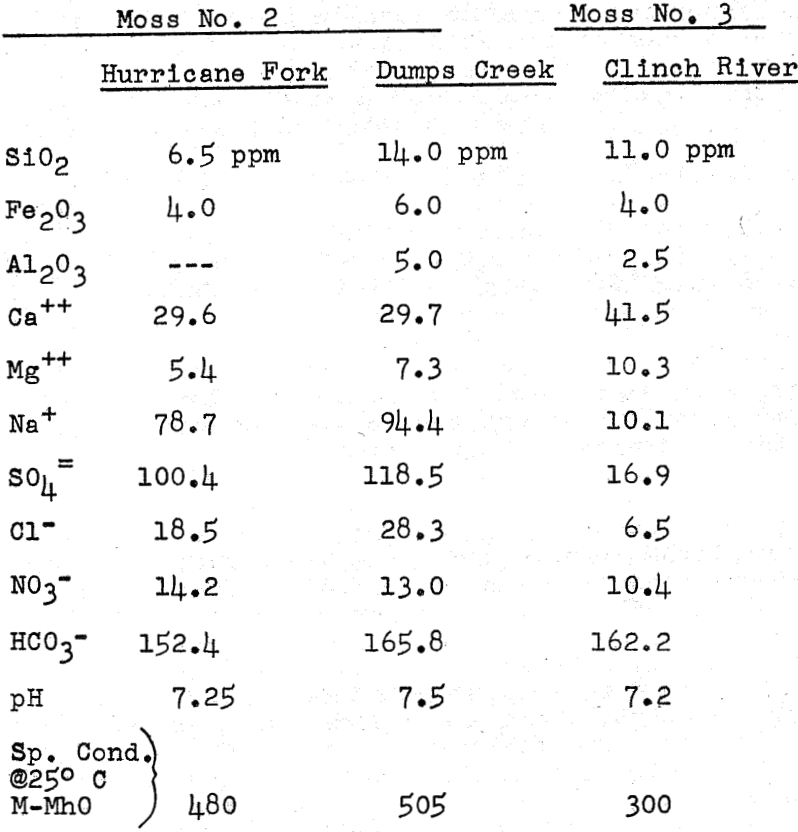
Flocculation of suspended solids is affected by two major forces – attraction and repulsion. Agitation or Brownian movement causes the solid particles to collide, thus permitting van der Waal’s forces (inter-molecular induced attraction) to hold the particles together. Repulsion effects, due to the electric potential of the solids (zeta potential), prevent close enough contact of the particles for the van der Waal’s forces to keep them together.
Separan AP30 is not a cheap chemical and care must be taken to obtain the maximum benefit from its use. Because of the rapidity with which the floes form and their unusually great size, it is not desirable to add the Separan too far back in the plant, as shearing forces will prevail in the usually turbulent influent flow to the thickener center well.
The high viscosity of the Separation AP30 solution was one of the unexpected problems which had to be solved during the field testing program.
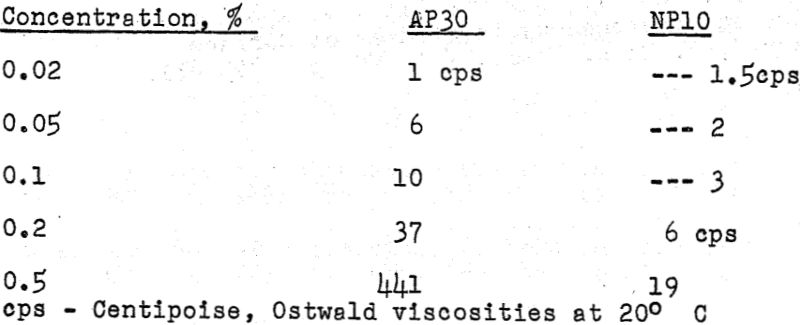
Substantial economies have been realized with the adoption of Separan AP30. The best way to show this is by tabulating the data, as follows:
In any plant hoping to achieve a closed-circuit operation, the thickener ideally should make two products, a clear overflow for reuse and a thickened underflow which may or may not be filtered before disposal. Oftentimes, a third less desireable product a surface frothor scum, is also formed.
